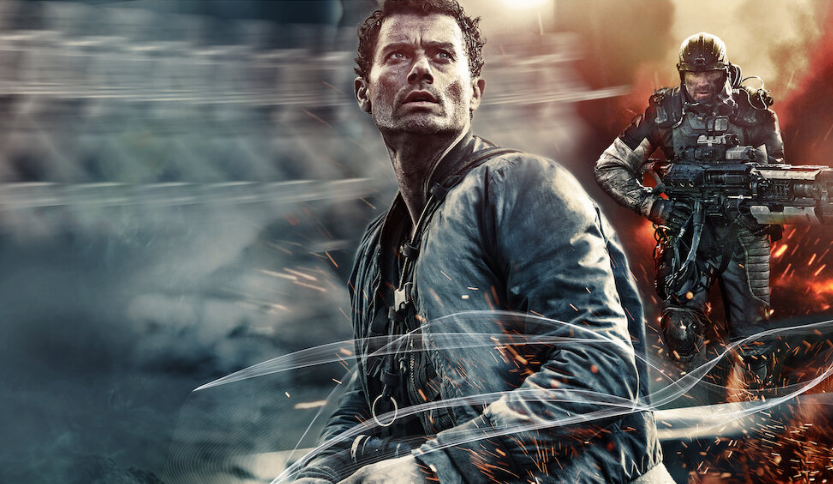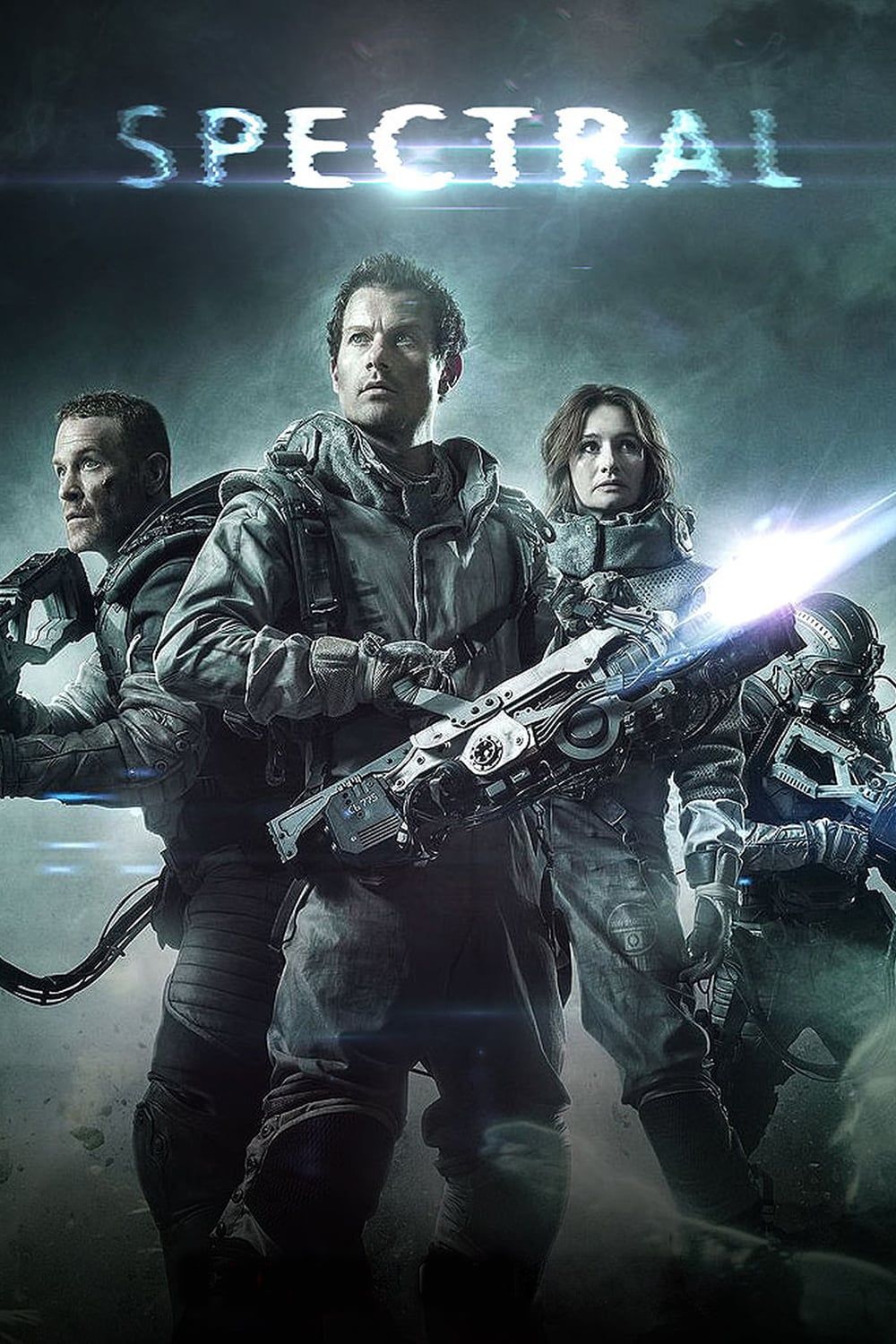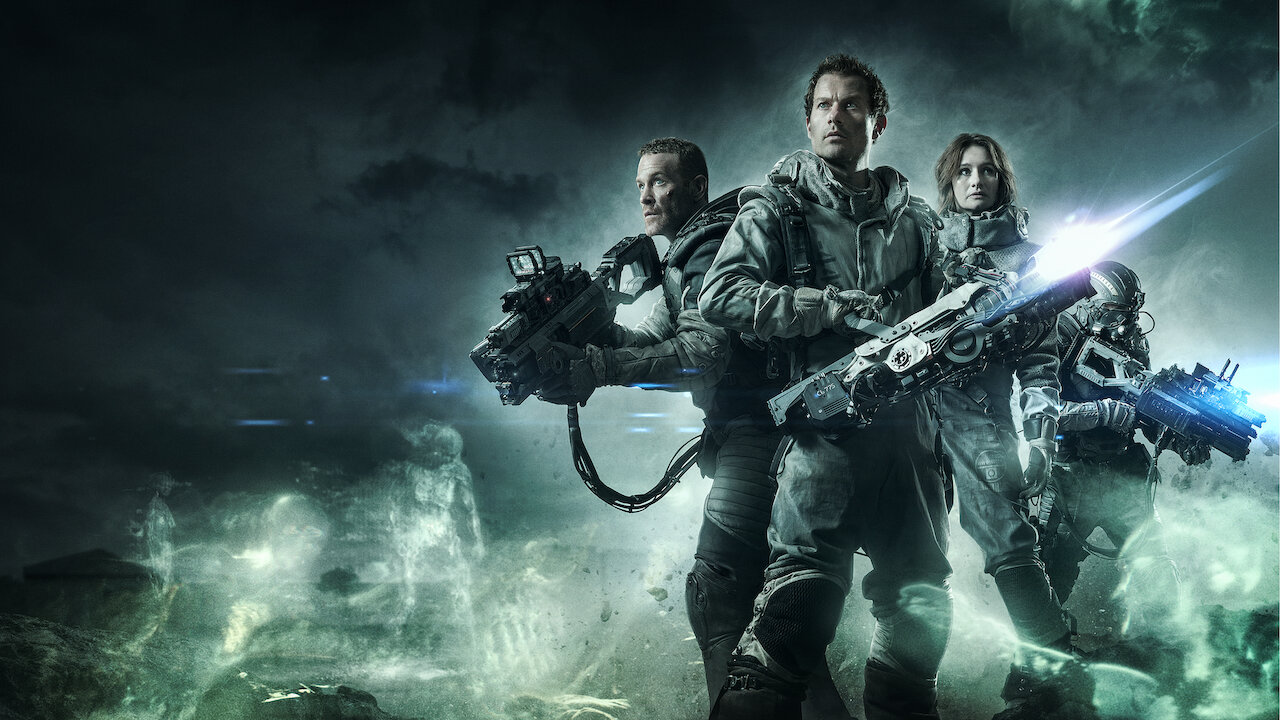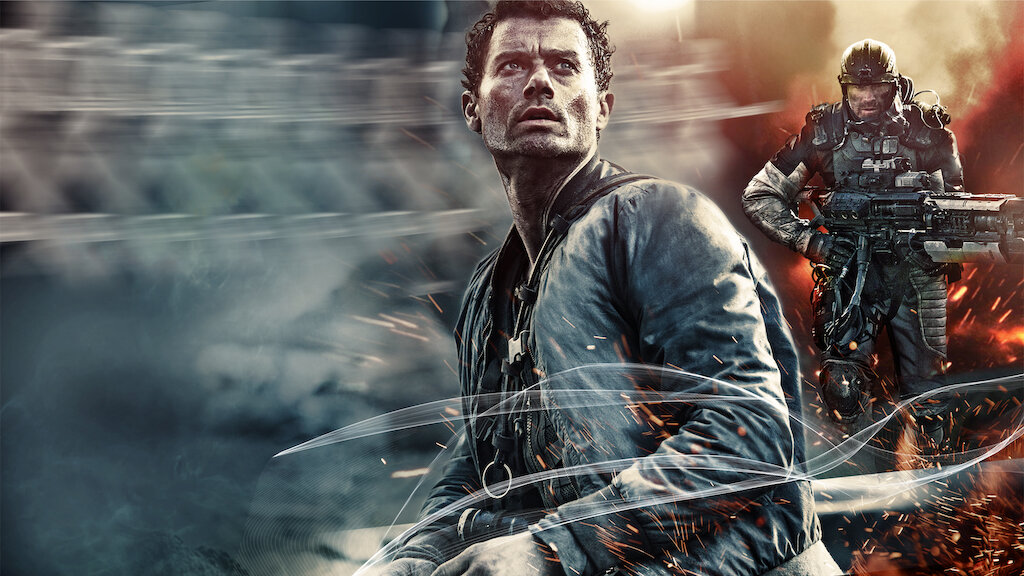Spectral (2016)

Spectral (2016) is a military science fiction film directed by Nic Mathieu, blending elements of war drama and supernatural thriller. Released by Netflix, the film stars James Badge Dale, Emily Mortimer, Max Martini, and Bruce Greenwood, and takes place in a war-torn, dystopian future where a mysterious and deadly force threatens to destroy everything in its path.
Plot Summary:
The story follows DARPA engineer Dr. Mark Clyne (James Badge Dale), who is sent to Eastern Europe to assist a U.S. military unit after mysterious “spectral” entities are discovered, causing catastrophic damage to soldiers and civilians alike. These spectral figures are invisible to the naked eye but are visible through advanced optical devices, such as specialized military goggles.
The situation becomes dire when these spectral entities start killing off soldiers at an alarming rate. The military initially believes they are dealing with cloaked insurgents or advanced enemy technology, but as the body count rises, it becomes clear that these creatures are not human. The spectral beings are seemingly unstoppable, phasing through walls and killing with a single touch, rendering conventional weapons ineffective.
Dr. Clyne joins a military squad led by Capt. Sessions (Max Martini) and CIA officer Fran Madison (Emily Mortimer) in the war zone to uncover the nature of these entities. As the team digs deeper, they discover that the “spectrals” are not ghosts or supernatural beings, but human souls trapped in a dangerous scientific experiment gone wrong.
The investigation leads them to a high-tech research facility where an experimental weapon was developed using a new energy source. The energy, instead of powering weapons, inadvertently trapped the consciousness of people, turning them into the spectral beings now haunting the battlefield. In a race against time, Clyne and the soldiers must devise a plan to destroy the spectral entities before they annihilate the remaining human forces.
Key Themes:
- Technology and Warfare: Spectral explores the intersection of advanced technology and its unintended consequences. The spectral entities are a byproduct of scientific experimentation, raising questions about the ethics of weaponization and how far humans should go in developing new forms of warfare.
- Survival and Resilience: The film portrays a military unit trying to survive against an unknown and seemingly invincible enemy. The soldiers’ determination, discipline, and reliance on teamwork are central to their efforts to combat the spectral threat.
- Science vs. Superstition: At first, the spectral beings are feared as supernatural entities, but as the story unfolds, their origin is revealed to be scientific. This theme emphasizes the importance of understanding the unknown through science and reason, rather than resorting to superstition or fear.
Characters:
- James Badge Dale as Dr. Mark Clyne: Clyne is a brilliant DARPA engineer who provides the scientific expertise needed to combat the spectral beings. His calm, analytical approach contrasts with the military’s aggressive tactics, and he plays a crucial role in discovering the truth behind the spectrals.
- Emily Mortimer as Fran Madison: A CIA officer working alongside the military, Madison is initially skeptical of Clyne’s theories but gradually comes to respect his knowledge. She acts as a liaison between Clyne and the soldiers, helping to bridge the gap between the scientific and military worlds.
- Max Martini as Capt. Sessions: The tough, battle-hardened leader of the military squad, Sessions is pragmatic and focused on protecting his men. His primary concern is survival, and he works closely with Clyne to figure out how to defeat the spectral entities.
Cinematic Elements:
- Visual Effects: One of Spectral’s standout elements is its visual effects, particularly the depiction of the spectral entities. The spectrals are portrayed as ethereal, ghost-like figures made of energy, phasing through solid objects and dissolving into light upon impact. The CGI is well-executed, adding a sense of menace and otherworldliness to these beings.
- Action Sequences: The film features numerous action-packed sequences, with intense firefights, tactical military operations, and battles against the spectral entities. The tension is high as the soldiers face a seemingly unstoppable foe, creating a sense of urgency and danger throughout the film.
- Atmosphere and Tone: Spectral effectively creates a bleak and ominous atmosphere, with its war-torn cityscapes and eerie, desolate environments. The film’s color palette is muted and cold, enhancing the feeling of isolation and dread as the soldiers face an invisible enemy.
- Science Fiction Themes: The film blends military action with hard science fiction, using the idea of advanced technology gone wrong as the basis for the plot. The exploration of energy-based beings and the consequences of weaponized technology provide the intellectual core of the film, making it more than just a standard war movie.
Reception:
Spectral received generally positive reviews for its visual effects, action sequences, and creative premise. While some critics pointed out that the plot is somewhat derivative of other science fiction films, such as Aliens and Ghostbusters, the film’s pacing, atmosphere, and engaging action kept audiences entertained. The movie was praised for its ambitious scope, considering its modest budget, and many viewers appreciated its blend of military action and speculative science fiction.
Conclusion:
Spectral is a fast-paced and visually impressive sci-fi action film that combines military strategy with supernatural mystery. Although it doesn’t break much new ground in terms of storytelling, its strong visuals, tense atmosphere, and engaging action sequences make it an entertaining watch, particularly for fans of sci-fi and military thrillers. The film also raises thought-provoking questions about the consequences of scientific experimentation, making it a bit deeper than your typical action movie.
















